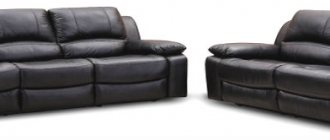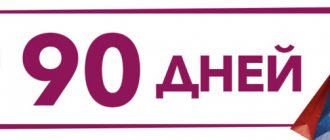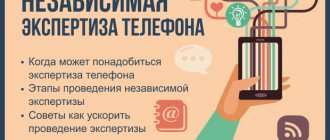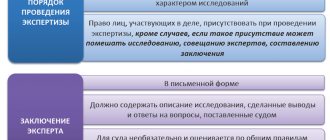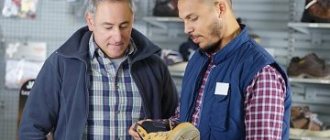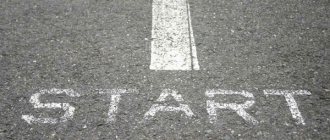The cost of footwear examination is from RUB 3,000.
Telephone
Commodity examination of shoes is carried out when defects are identified, if the seller or manufacturer refuses to return or replace the product with a quality one. Research - independent examination of shoes, independent examination of goods, examination of shoes is carried out to evaluate the characteristics, consumer properties of shoes, their compliance with the declared ones, identify the causes of defects, determine how they affect the use of the product for its intended purpose
You can conduct an examination of shoes in Moscow by contacting the branch addresses:
Legislation
There are a number of laws regulating relationships in the field of trade.
Dear readers! To solve your problem right now, get a free consultation
— contact the lawyer on duty in the online chat on the right or call: +7 (499) 938 6124 — Moscow and region.
+7 (812) 425 6761 — St. Petersburg and region. 8 (800) 350 8362 - Other regions of the Russian Federation You will not need to waste your time and nerves
- an experienced lawyer will solve all your problems!
According to Article 469 of the Civil Code of the Russian Federation (current edition dated July 29, 2018), products sold must be of adequate quality.
Article 475 of the Civil Code of the Russian Federation contains a list of demands that the buyer has the right to present to the seller who sold him low-quality goods.
The document also spells out the procedure for exchanging such products (Article 502 of the Civil Code of the Russian Federation) and returning money (Article 504 of the Civil Code of the Russian Federation).
Another document regulating this area of legal relations is the Federal Law of the Russian Federation dated 02/07/1992 No. 2300-1 (as amended on 04/18/2018) “On the Protection of Consumer Rights”. It establishes the rights of a buyer who has purchased goods of inadequate quality (Article 25 of the Law).
In addition, there is a “List of non-food products of inadequate quality that cannot be returned or exchanged for similar products of a different size, shape, size, style, color or configuration.” It is periodically supplemented and updated. The version dated May 30, 2018 is currently in effect.
Important : Shoes are not included in this listing. The seller cannot refuse to exchange low-quality products or return money to the buyer, citing the special status of this product.
Commodity examination in Samara
"SSED" carries out commodity examination in Samara both within the framework of judicial proceedings and upon applications from individuals and legal entities.
What is it and what is it for?
Commodity examination is a set of studies aimed at identifying certain qualities of a product in order to establish compliance with regulatory documentation. Commodity examination is carried out, as a rule, by a group of experts of various specializations.
The subject of commodity research can be anything: household appliances, electronics, cosmetics, building materials, haberdashery goods, furniture, etc.
According to current legislation, the examination is carried out at the expense of:
- the seller, if the warranty period for the product has not expired;
- buyer if the expiration date has expired or has not been established.
In a situation where the results of the examination do not satisfy the consumer, he has the right to conduct an independent study, having previously notified the seller of the goods. In this case, all costs of conducting the examination will fall on the shoulders of the buyer, but if the result turns out to be in favor of the consumer, then the seller will have to not only return the money for the purchase, but also compensate for the costs of the independent examination.
Thus, commodity examination is carried out in the event of a dispute between the seller and the buyer regarding the quality of the product.
What is the price?
The cost of commodity examination depends on the prices of the expert company. At the same time, the minimum acceptable cost of one expert hour for contract research in state forensic institutions is established at the legislative level - by order of the Federal Budgetary Institution “Russian Federal Center for Forensic Expertise under the Ministry of Justice of the Russian Federation”.
On average, the cost of commodity examinations ranges from 3-7 thousand rubles.
Dates
The timing of the examination is provided for at the legislative level. The seller/manufacturer is given no more than 45 days to eliminate defects in the product, up to 20 days to exchange the product, and a maximum of 10 days to return the money.
Questions to the expert
Commodity examination is designed to answer questions such as:
1. Does the quality of the product correspond to the information indicated on the packaging or in the accompanying documentation?
2. Does the quantity of the enclosed product match the data contained on the packaging?
3. What are the actual characteristics of the product?
4. Do they match the markings on the tag, label or packaging?
5. What are the differences between the established characteristics of the product and the indicators contained on the packaging or in accompanying documentation?
6. Does the quality of the object under study comply with the requirements of the standards developed for this group of goods?
7. What are the deviations in product quality from these standards?
8. Is it permissible to sell the products under study? Is it possible to recycle or dispose of it?
9. Does the accompanying documentation allow for the conditions under which the goods were actually transported or stored?
10. Does the packaging meet the requirements of the relevant quality standards?
11. Could the storage conditions affect the change in the quality of the object under study?
12. What rules for accepting goods could have been violated?
13. Do the determined indicators of the product correspond to the same characteristics of the reference samples?
14. Does the object under study have any defects?
15. What are the causes of defects?
16. Do the defects have a manufacturing origin?
17. Is the method of calculating the rate of natural loss chosen correctly, taking into account the given conditions of transportation and storage of goods?
18. What is the residual value of the damaged product?
19. What is the cost of the object under study, taking into account wear and tear immediately before it was exposed to fire, leakage, etc.?
20. How much have the quality and price of goods damaged as a result of a leak, fire, or chemical contamination decreased?
Types and classification of commodity examinations
Customs
Customs examination is one of the types of commodity research, which is carried out to identify shortcomings caused by the conditions of transportation of goods across borders.
The main objectives of such an examination are:
- determination of product quality;
- determining the method of collecting duties on products transported across the border;
- establishing compliance of the goods and their quantity with the description specified in the documents.
Examination of the cost of goods
An examination of the cost of a product is a study aimed at determining the market price of a product. This type of research is one of the most important types of commodity examination, since based on the results obtained, the seller and buyer make a certain transaction.
Today, the most popular type of appraisal activity is real estate appraisal. Its tasks include calculating the cost of premises for the purpose of sale, exchange or rent.
Contract
A study in the field of compliance with regulatory documentation of a product, the presence of certain markings, packaging times, cargo storage and delivery quality is called contract examination.
The procedure for conducting such an examination is quite complex, as it involves the sequential execution of certain actions. Often during the study it is discovered that there is a lack of a complete description of the product in the available regulatory documentation or the presence of discrepancies with the specified quantity. And without complete, reliable and comprehensive information, it will be extremely difficult to make any claims to the seller or manufacturer.
Commodity examination of footwear
Commodity examination of footwear is a check of compliance of quality indicators with the needs of regulatory and technical documentation. During the examination of shoes, the expert checks their compliance with GOST requirements in terms of appearance, correct packaging and labeling, as well as compliance of physical and mechanical characteristics with the declared indicators.
The main objectives of conducting commodity examination are:
- establishing factual data related to compliance or non-compliance with the rules of operations (storage, packaging, transportation, etc.);
- determining compliance or non-compliance with regulatory requirements;
- determining the mechanism for changing object parameters;
- establishing the value of an object taking into account its condition.
Automotive merchandising after an accident
Automotive product examination is a set of measures aimed at assessing the cost of upcoming repairs and restoration of a vehicle, as well as determining its residual value and the amount of damage received. In addition, this type of examination can determine the amount of loss of marketable value.
Automotive product examination is used after an accident in cases where:
- the insurance accrued a smaller amount than the injured party believes;
- the culprit of the accident is not insured or the damage caused exceeds the payment of the insurance company;
- the person responsible for the accident believes that the amount of damage has been significantly inflated by the other party;
- damage was caused as a result of intentional actions of persons or unforeseen circumstances.
This type of research allows you to determine:
- market value of the car;
- the cost of repairs to restore the car;
- physical wear and tear of the vehicle;
- the cost of loss of the vehicle's marketability;
- availability of suitable residues and their cost;
- residual value of transport taking into account the current condition;
- the cost of parts, components and assemblies of the car;
- compliance with vehicle equipment documents;
- year of manufacture of the car and its parts;
- engine type, its power and volume;
- the ability to repair or restore a car after an accident;
- correct calculation of costs for repair and restoration of transport;
- the need for a list of repairs.
Another separate type of commodity research is consumer examination of products, which consists of identifying product defects and the reasons why damage occurred.
The consumer research procedure is carried out in accordance with the established procedure by a special commission of several experts.
How to do it: step by step
In order to conduct a commodity examination independently, the consumer must:
- choose a competent expert company;
- enter into a contract;
- pay for the service;
- agree on the time and place of the examination;
- provide all necessary documentation;
- wait for the examination;
- obtain an expert opinion on the work performed;
- transfer the claim and expert opinion to the seller/manufacturer.
It is worth noting that if, after receiving the results of an independent study, the seller refuses to compensate for the damage caused on a voluntary basis, the consumer can go to court to resolve this issue at a different level.
Profession: commodity examination expert
What does he do?
The profession of a commodity examination expert involves examining the quality of goods in order to establish compliance with the declared characteristics and current legislation. The specialist not only examines the object of examination and analyzes the available documentation, but also maintains his own reports, including drawing up the final expert opinion.
What skills are needed and where to learn?
The most important qualities of a professional commodity examination expert are:
- accuracy;
- attentiveness;
- Analytical mind;
- observation;
- good memory.
Working as a commodity examination specialist requires having a specialized secondary or higher education in any field, as well as additional education in an expert specialty. For example, to carry out a forensic examination, it is necessary to take a course in the specialty “Forensic Commodity Examination”, which will allow the specialist to subsequently receive a forensic expert certificate and thereby increase their own importance in the expert market.
How much can you earn?
According to statistics, the average salary of a commodity examination expert is about 30-35 thousand rubles.
Sample documents
Petition
You can find a sample application for a commodity examination at
Is it possible to appeal the results of commodity examinations?
An interested person may appeal the results of a commodity examination if:
- violations of assessment standards were identified;
- during the study, invalid regulatory documents were used;
- the expert’s qualification level is not sufficient to conduct this type of examination;
- the requirements of the examination methods were violated.
Thus, commodity examination is a set of studies aimed at establishing accurate data about a product in order to calculate certain of its defects. In conclusion, I would like to note that you should only contact reliable and trusted expert organizations that are fully responsible for their own activities. Otherwise, conducting research may just be a waste of money.
What shoes are considered to be of poor quality?
The law defines a product of inadequate quality as having defects that the person did not know about at the time of purchase (Article 475 of the Civil Code of the Russian Federation). They can be either irremovable, or require significant investment of time and money to eliminate, or are repeated many times.
For example, a consumer purchased a pair of leather autumn boots, but after a couple of days of wearing them, the soles peeled off. Such shoes are classified as a product of inadequate quality, since they have hidden, irreparable or difficult to eliminate defects that prevent them from being used for their intended purpose.
Important : if after purchasing shoes the consumer decides that the color, material or style does not suit him, he cannot return the money or exchange the purchase as a defective product.
How to check the quality of children's shoes?
06.08.2014
How to check the quality of children's shoes?
The question is complex, and there is no way to answer it unequivocally. You can, of course, read the technical regulations on children's products
, but we are usually guided by our knowledge and visual analytics. So, we will give you some tips that we hope you will find useful.
Before you buy children's shoes
, first clearly define why you are buying this pair. Are you planning to buy one pair of sandals and wear them in the garden, for walks, on visits, and anywhere else?
You came to the store and chose the pair you and, of course, your child liked. Now you need to conduct your own examination - carefully examine and touch the boots or shoes
. Shoes in a pair must be the same in size, fullness, structure and color of materials, and all parts of the same name must be the same in density, thickness, shape and size. And of course, stains, folds and wrinkles are a defect, unless of course this is not intended by the designers.
Even if you decide to save money and go to the market and not to the store to buy shoes (of course, a risky step, since you are unlikely to receive either a receipt or a guarantee). Still, it's not worth buying boots
with poorly glued or torn lining, loose seams, with internal seams not smoothed out, with cracked or peeling upper parts of the shoes.
your child's shoes in the same careful manner.
and in a specialized, quite respectable-looking store, the store is not a manufacturer and is responsible for the products it sells indirectly. Goods arrive at the store in large quantities, and the store does not have the opportunity to check each pair for defects. Therefore, this responsibility falls on the buyer. Of course, if you discover a defect while wearing it, the store is obliged to accept this defect within the period established by the law of the Russian Federation. But it’s better to check the shoes right away so that the purchase experience remains positive. By the way, a self-respecting store always meets its customers halfway and helps resolve the issue of defects and returns to the end customer.
Today's technologies for manufacturing children's shoes
set, I can write about this now ad infinitum. But remember one main point: all artificial and synthetic materials, textiles made from chemical fibers, used for the internal and external parts of the top and bottom of children's shoes (except for finishing parts) must be permitted for use in accordance with the technical regulations CU 007/2011 “On Safety” products intended for children and adolescents."
Unfortunately, shoes on the consumer market are the same product that for several years in a row has been the leader in the number of complaints and complaints from consumers about its quality. Try to buy shoes
from a regular seller, a store that you know, that is responsible for quality, and can show you certificates of conformity. Get to know the store's sellers, they know their product range well and will recommend you a good product with excellent quality, since they are interested in a regular customer. According to the standards for children's shoes, the difference in the length and width of the same parts in a pair of shoes should not exceed 2 mm, and different heights for boots and ankle boots - no more than 5 mm, for boots - no more than 4 mm, low shoes and shoes - 2 mm. For backs and heels, this difference should also not exceed 2 mm. Of course, you won’t be able to tell the difference by eye, but if anything bothers you, it’s better to stop and not buy. The gap between the decorative edge or edge of the sole and the side surface should not exceed 1 mm. Bubbles, dents and underfills that form during the vulcanization process should also be insignificant. How to check? Pick up shoes from a Western manufacturer, which may be produced in China, but under strict production control and a guarantee of product quality, and pick up children's shoes that are simply made in China under a brand that you hear for the first time. You will immediately understand the difference, even without being a professional.
On the issue of marriage. This may, of course, be news to you, but the warranty does not apply to decorative elements that are usually attached in large quantities to children's shoes, be it bows, rhinestones, etc. If they fall off during wear or something happens to them, the store and the manufacturer have the right to refuse to accept the shoes for return. Another important point is that if the material of the inner part of the shoe stains socks and tights during wear, this is also not a defect.
Most importantly, always ask the store for the warranty period for shoes, since it can vary depending on the season and depending on the manufacturer. And of course, keep the purchase receipt, it will help you resolve any issues. Happy shopping. Your store Minimenshoes.
Have a good day!
Always yours, online children's shoe store Minimenshoes.ru
Photo: Gant. Author: Semenova A.
| < previous publication | next publication > |
We are waiting for you on our store’s Facebook page and on our VKontakte page. Join, write reviews and like! You might also be interested in:
|
|
|
|
We recommend products from our catalog:
| White gymnastics ballet shoes | Black heeled shoes | Sneakers for physical education |
What is it like?
If, after acquisition, the buyer discovers the presence of hidden defects, he can initiate a merchandising examination.
How can it help
For example, women's sandals from ECCO were purchased. After a couple of days of wearing, the person returned to the store and stated that the item was defective, since the strap of one of the sandals had come off. The seller refuses to return the money or change the product, claiming that the buyer himself damaged the shoes. In this case, you cannot do without an examination.
It is designed to protect the interests of both the consumer and the seller of the disputed item. During the merchandising examination, it is determined whether the identified defect is a manufacturing defect or arose as a result of improper use of the product or intentional actions of the buyer.
In addition, the study assesses the product’s compliance with the provisions of a number of GOSTs containing requirements for certain types of footwear (examples: children’s, sports, etc.).
Who is hosting it?
To conduct a study of purchased shoes, you must contact an expert organization. It can be either public or private. This will not affect the legal status of the expert opinion received.
You can also contact the Chamber of Commerce and Industry. This organization operates throughout Russia and has branches in all regional centers and federal cities. As a rule, the staff of the Chamber of Commerce and Industry includes experts with a wide range of specializations.
Having decided where exactly the research will take place, you should clarify the qualifications of the expert. The legislator defines a specialist as a person who has the necessary knowledge to answer the question posed. The following may serve as confirmation of expert status:
- diploma indicating receipt of specialized education;
- documents confirming work experience as an expert;
- other papers proving the presence of special knowledge (advanced training, certificates, certificates of additional training, etc.).
Deadlines
The time for commodity examination is not regulated by law and depends on the complexity of the research and the busyness of the specialist. On average it varies from one working day to several weeks. The expert will be able to say exactly how long it will take after reviewing the questions posed.
Is it possible to observe
If the buyer wishes to be personally present during the examination, he is given this right (Article 18 of the Law “On Protection of Consumer Rights”). In accordance with this article, the initiator can monitor the progress of the study, and if he disagrees with the expert’s conclusion, he can challenge it in court.
How much does it cost and who pays
The price of the research directly depends on the complexity. All expenses are borne by the person who initiated it. However, if the expert determines that the shoes presented for research have a manufacturing defect, the victim has the right to demand compensation from the seller for the costs of conducting the research, as well as the costs associated with transporting and storing the item.
If the store refuses to voluntarily pay the costs incurred, they may be recovered in court.
Independent examination of footwear.
Footwear is a basic necessity and is one of the most important consumer goods. The quality of shoes plays a big role and shoes must meet a set of requirements. The main requirements are ergonomic, hygienic, physiological, aesthetic, and operational.
Ergonomic requirements reflect the ability of shoes to satisfy human needs for convenience and comfort during the operation of products in the human-footwear-environment system. The standards standardize individual indicators of these requirements: size, fullness, height of shoes and hard heels, width of ankle boots and tops, etc. Compliance with anthropometric properties.
Hygienic requirements are that shoes provide the necessary microclimate and comfortable conditions for the foot of the shoe. From the point of view of hygienic properties, shoes must, firstly, perform a thermoregulatory function, i.e. maintain a certain temperature, secondly, ensure access of oxygen to the foot, thirdly, ensure the timely removal of decay products of human activity (sweat, carbon dioxide) from the space inside the shoe, fourthly, facilitate the removal of charges of static electricity.
Physiological requirements are the compliance of shoes with a person’s physiological capabilities, his strength and speed capabilities. These include: mass, stiffness, friction properties of shoes.
Aesthetic requirements reflect the ability of shoes to satisfy the aesthetic needs of a person. The main indicators of aesthetic requirements for shoes are their compliance with artistic trends, informational expressiveness, rationality of form, integrity of composition, perfection of production execution, stability of presentation.
Operational requirements are characterized by the ability of shoes to perform their functions and maintain basic parameters over time and within limits corresponding to operating conditions. Reliability is a complex property and combines reliability, durability, storage (form stability) and maintainability.
Durability depends on the properties of the materials, the intensity of wear, soil and climatic conditions, the strength of fastening of parts, and the presence of hidden defects. The durability of shoes is assessed by experimental wear or by individual indicators regulated in the standards for shoe materials and footwear.
The quality of footwear is one of the most important factors in determining the level of competitiveness of enterprises. Quality is a set of characteristics of footwear that determine the ability to satisfy established and expected needs.
When examining the quality of leather shoes, the following methods can be used: organoleptic, measurement, sociological, expert, calculation, as well as the trial operation method (socks).
Tasks of footwear examination:
— quality for defects in appearance in accordance with the requirements of contracts and regulatory documentation;
— percentage reduction in the quality of shoes due to the presence of defects;
- percentage markdown.
The examination of footwear is carried out in accordance with the requirements of the technical conditions of the contract and regulatory documentation.
Acceptance of footwear is carried out in accordance with the requirements of GOST 9289.
According to the requirements of regulatory documentation, leather shoes must correspond in appearance, materials, design and method of attaching the sole to the approved procurement sample (technical description of the shoe model).
Labeling and packaging must comply with GOST 7296.
All parts of the same name in a pair must be identical in density, thickness, shape, size, color and pattern.
The materials used for the top and bottom of shoes, linings, special cardboards and thermoplastic materials for intermediate parts must comply with quality I standards of GOST standards and technical conditions (TU).
The materials of the top and bottom of winter shoes and fastening methods must be designed for wear at temperatures down to -30°C, PVC shoes - -20°C while maintaining the elasticity of the top.
Lining materials must have:
— dyeing resistant to dry and wet friction;
- well-polished mesh side of leather for unlined shoes;
— a lining made of natural or artificial fur with a dense, even-height pile;
- processed, in accordance with the contract specifications, the top edge and the front edge of the workpiece and lining;
- well-glued lining at the joints in the absence of thread seams;
- a clean shoe upper, without stains, folds, wrinkles, cracks, shedding of the coating, tears in the leather along the stitching and odor;
— the edges of the top and lining parts, evenly lowered along the fastening line, are clean and even;
- parts of the shoe upper, fastened with shoe threads, providing the required fastening strength.
Tack seams must be carefully smoothed, stitched or taped. Decorative fittings, embellishments and fasteners are firmly and symmetrically fastened. The stitching connecting the parts must be smooth, clean, without skipped stitches or broken threads. The stitches are uniform, well tightened, at the same distance from the edge of the parts and parallel to each other, the ends of the threads are secured and trimmed. The lining is well stretched, without tears, folds, dirt, cracks or shedding of the coating.
The shape, width, height and length of the shoe parts must be the same in both half-pairs. The toes and heels of the shoes are elastic and shape-resistant, well molded. The backs should be stable along the entire perimeter, except for the upper part at a distance of 18-20 mm from the edge and in the wings at a distance of 18-25 mm from the ends, well glued to the top and lining of the shoes. Insoles - match the contour of the footprint, do not have folds and are well glued; the surface of the insole inside the shoe is flat, smooth, without protruding nails or staples, corresponding to the footprint of the last in contour and size. The bottom parts should fit tightly to each other and to the top parts, without gaps or crevices. The edge of the sole and the side surface of the heel are processed, painted and finished according to the material of the sole and heel.
Shoe defects.
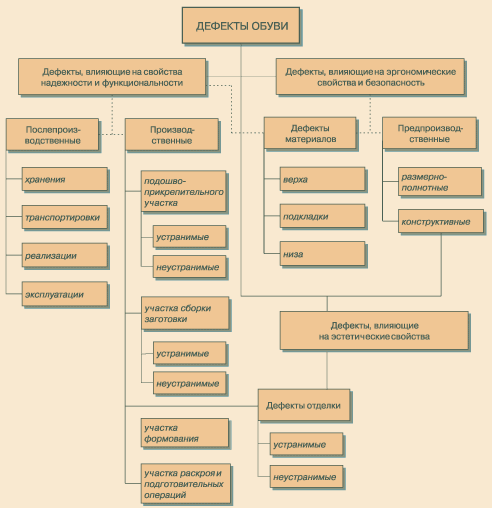
The causes of defects in shoes can be operational and production. Operational reasons may depend on the consumer (careless wearing of shoes, improper care) and/or on the enterprise producing the shoes (violation of manufacturing technology). Reasons depending on the enterprise can be hidden or obvious.
The production causes of defects may or may not depend on the enterprise. Reasons beyond the control of the enterprise are hidden and obvious defects in materials, if the enterprise does not produce them itself, but purchases them.
A study of shoe returns showed that the greatest share is due to reasons that depend directly on the manufacturers. Therefore, in the competition for consumers, enterprises that will pay due attention to quality issues, increase the level of production and take into account the wishes of consumers in the field of shoe quality will win.
Specialists of ANO "MBSEiO" can conduct commodity research of any complexity; modern laboratory equipment is used to conduct research. For more detailed information on the procedure for conducting commodity examinations, you can consult an expert by phone numbers listed on the website or by email
What is needed for the examination
Having chosen an organization, the buyer must conclude an agreement with it for the provision of services, submit an application for an examination and provide the disputed goods.
For example, a person bought a pair of rubber boots. During use, it turned out that they leak water. Assuming that the boots were made of low-quality rubber, he contacted an expert organization, filled out the necessary documents, and submitted the shoes for examination.
Important : shoes provided for inspection must be clean and packed in the box in which they were sold. If the buyer still has a cash receipt or other document confirming the purchase of the disputed goods, it is also transferred to the expert institution.
The following manufacturing defects may serve as grounds for conducting a commodity examination:
- damaged lining materials;
- the top of the shoe is stained with glue;
- shoes damaged by a decorative element;
- the adhesive seam has come apart;
- the sole is cracked or burst;
- the upper material burst;
- peeling or separation of the sole;
- painting socks or feet with shoe paint;
- getting wet (for rubber boots)
All of the above flaws provide for a unified procedure for contacting an expert organization.
Procedure
In general, footwear examination proceeds as follows:
- The buyer sends an application to the seller or his representative to conduct an examination.
- The box with shoes is sealed until the day of examination.
- The organization that accepted the application selects a company to conduct the examination and sets a date.
- An examination is carried out and a specialist’s opinion is drawn up.
As a rule, an application for an examination is drawn up after a refusal to comply with the buyer’s request for warranty repair of shoes, a refund for the purchase, or a reduction in its value due to a defect.
The application must indicate:
- Buyer's name and contact details;
- address of the retail outlet where the shoes were purchased;
- Date of purchase;
- the price of the product;
- list of detected deficiencies;
- purpose of the examination.
A sample application for an examination of low-quality shoes can be found here.
When listing shortcomings, it is important to indicate how they affect the operation of the product. For example, low moisture resistance of shoes leads to regular getting wet and damage to the internal parts. These instructions are necessary to emphasize that damage to the shoes during use occurred due to poor quality material or a violation of production technology.
The retail chain that sold the product, the shoe manufacturer or authorized representatives of these persons are authorized to accept the application. The packaging with the product is sealed by covering it with paper tape with the signatures of the buyer and the employee who accepted the application.
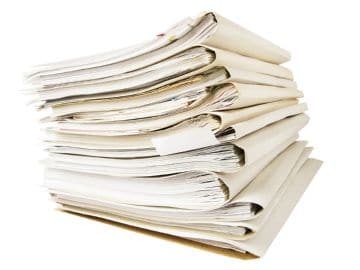
The following must be attached to the application:
- copy of the applicant's passport;
- a receipt for previous repairs (if available);
- sales or cash receipt;
- warranty card;
- operating instructions ;
- packaging.
The applicant has the right to be present during the examination, and if the examination was carried out without the knowledge of the buyer in his absence, he has the right to consider its results invalid and demand termination of the purchase and sale agreement through the court with compensation not only for the full cost of the shoes, but also for the expenses incurred. After setting a date for checking the shoes, you need to request a stamped certificate from the seller’s representative indicating the time and place of the examination.
The result of the inspection is an expert opinion, certified by the signature of the responsible specialist and the seal of the organization. The conclusion must contain a detailed description of the product, the method and procedure for analyzing its properties, as well as a reasoned list of reasons for the appearance of shortcomings.
If the buyer disagrees with the results of the examination, the expert’s conclusion can be challenged in court.
Complaint/Application Process

Having decided where to apply and having approved the candidacy of an expert, you should properly prepare all the documents necessary for the study.
Choosing an organization
The company conducting the examination offers the client who contacts it to enter into an agreement for the provision of services. This is an important document that should not be neglected under any circumstances. The contract stipulates the cost and timing of the research, and may also list questions that the expert will answer.
Documentation
The application for a commodity examination indicates the date of preparation, last name, first name, patronymic, passport data, as well as the address of the applicant, describes the identified defect in the product and provides questions posed to the expert.
How is it carried out?
The verification itself contains a number of mandatory steps, but its methodology directly depends on the questions asked. First of all, the presented product is inspected, and the sample being studied is often photographed at the same time. After this, the expert conducts a study that allows him to draw a conclusion about the presence or absence of a defect and answer the questions posed.
Manipulations with an item can be recorded using photo and video equipment.
Without actually examining the product, no conclusion can be made about its quality. And only then an expert opinion is created.
It should contain the following information:
- start and end dates of the study;
- place and basis of the event;
- information about the customer;
- information about the expert indicating his qualifications;
- description of the product under study (quantity, characteristic features);
- questions posed to the expert;
- methodological basis;
- list of tools and technical means used;
- a detailed answer to each of the questions posed;
- list of applications (if available).
At the end of the conclusion there must be the expert’s signature and its transcript. The completed conclusion can be delivered to the applicant personally or sent by mail to the address specified in the agreement/application. If photography or video recording was carried out during the study, the materials are compiled in the form of separate attachments.
What is being investigated in the process
Experts will take samples and analyze microbiological and physico-chemical characteristics.
Explore:
- For compliance with standards, the material of the lining and top of the product, the sole.
- Why did cracks and breaks appear?
- Moisture retention.
- Sole deformation.
- No lining.
- Poor quality protective coating.
- Taped joints.
- Mechanical defects.
- Surface cracking.
- Manufacturer defect, etc.
There are three degrees of defects: minor, which can be eliminated, significantly deteriorating quality, and critical, in which it cannot be worn.
In any case, it is better to have an independent examination of the shoes. If the consumer is not satisfied with the results obtained by the seller, a re-examination can be ordered by notifying the other party in writing, indicating the date and location.
What to do after
If during a commodity examination it is determined that the shoes submitted for examination have a manufacturing defect, the buyer has the right to demand that the seller exchange the low-quality product for a similar one or return the money.
This process is regulated by Article 18 of the Law “On Protection of Consumer Rights”. In this case, a claim is drawn up in the name of the seller, which describes the identified defect and also states the desired requirement. A copy of the sales receipt and an expert opinion is attached to the claim.
How to get your money back
You can duplicate your claim in the “Book of Reviews and Suggestions,” which store employees are required to provide upon the buyer’s first request.
If the seller left the complaint unanswered or refused to satisfy the stated requirements, further proceedings take place in court.
To confirm the facts reflected in the conclusion, the court may order an independent forensic examination.
Step-by-step instructions for the consumer
In order to carry out a shoe inspection, you need to take a number of simple steps.
Did you know
The warranty period for seasonal shoes begins at the beginning of the wearing season (which differs depending on the region). So, if winter boots were purchased in the summer, the warranty on them begins to apply only with the onset of the winter season. Read more on our website in this article
Step one
Determine how to submit shoes for examination. This can be done in 2 ways:
- independently select an independent expert;
- give the shoes to the store where the purchase was made.
When choosing where to have your shoes examined, you should keep in mind that a company or private expert must have a special license to carry out such procedures and issue an expert opinion in writing. Such centers of independent expertise can be found via the Internet in almost every city. You can also contact the Federation of Forensic Experts, the largest company in the Russian Federation that carries out expert assessments of footwear products and fully meets the requirements for such organizations.
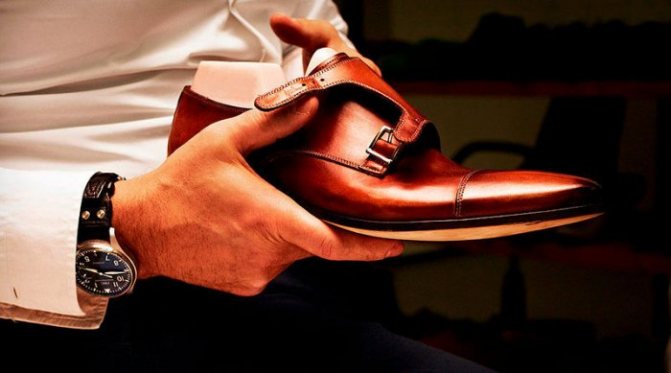
If you give your shoes to a store, then the choice of company to conduct an expert assessment is carried out without taking into account the buyer’s opinion. After the expert opinion is issued, the buyer has the right to disagree with the conclusions made and can independently submit the shoes for re-examination. In such a development, the client must notify the store administration of his actions by means of a written notification.
Step two
Prepare the documents necessary for the examination and submit them along with the shoes for inspection. To perform expert actions, it is necessary to provide both half-pairs of shoes, and not just the one in which a flaw was found. The examination is carried out over several days, carried out using a visual examination and, if necessary, using laboratory tests.
Documents for examination:
- the application is drawn up in any form. Must contain the following information:
- surname, name and patronymic of the applicant,
- passport details,
- description of the detected defect,
- date of document preparation,
- applicant's signature with transcript;
- a receipt issued when purchasing shoes;
- a receipt for payment for repairs, if claims are made regarding the quality of the repairs performed.
Step three
Wait for the results of the examination. An expert opinion is an official document that indicates: who and by what methods carried out the investigation of the existing defect, a conclusion about the reasons for the formation of the defect, the signature of the person in charge and a seal impression.
Step four
The next step will depend on the summary of the expert opinion. There are 2 possible outcomes:
- The cause of the shoe defect under study was improper use. This conclusion speaks for itself - you need to wear shoes carefully, following certain rules. The shoes remain with the buyer, money for the purchase and examination is not returned;
- The cause of the defect was a manufacturing defect. This option entails several possible solutions provided for in Art. 18 Federal Law “On Protection of Consumer Rights”:
- refund by the seller for defective shoes,
- exchange of a defective product for the same model,
- exchanging a defective pair of shoes for another model with an additional payment if the selected model is more expensive than the previously purchased one, and with a partial refund from the seller if the model is cheaper,
- repairing the product at the expense of the seller,
- reduction in the cost of a given pair of shoes and, accordingly, a partial refund.
Is it possible to return shoes if they rub - read this article https://potrebexpert.online/5075-usloviya-poryadok-vozvrata-noshenoi-obuvi
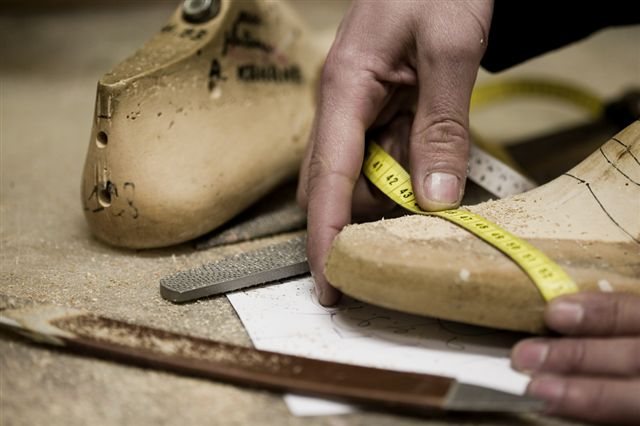
It is worth noting that if the examination made a decision in favor of the buyer, and was carried out at his expense, then the store must return the money spent on it to the client. If the seller refuses to satisfy all the buyer’s legal requirements, confirming this in writing, then the client has the right to seek help from the local consumer protection office or directly to the courts.

